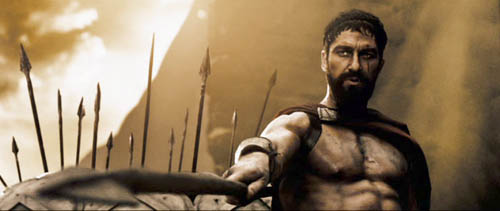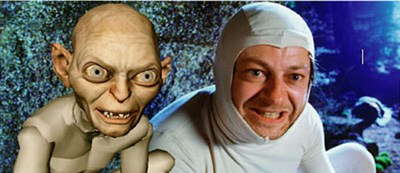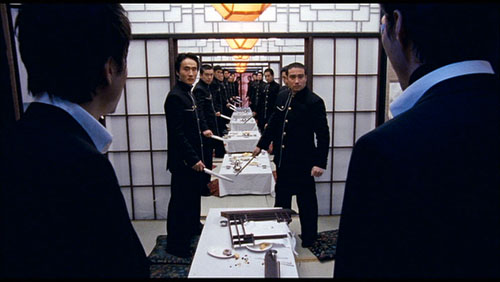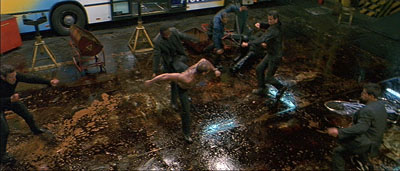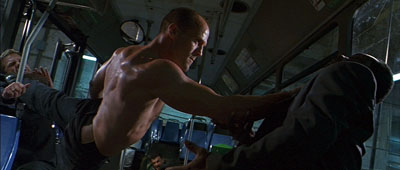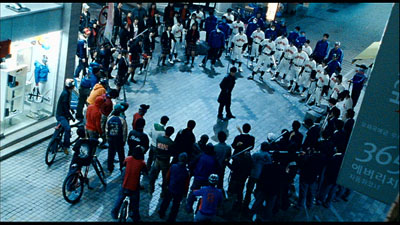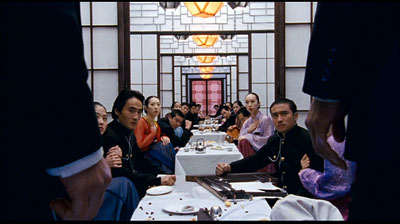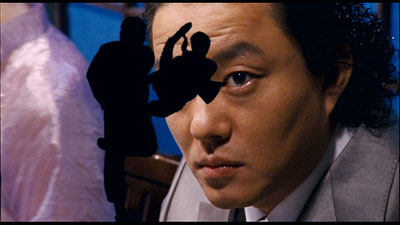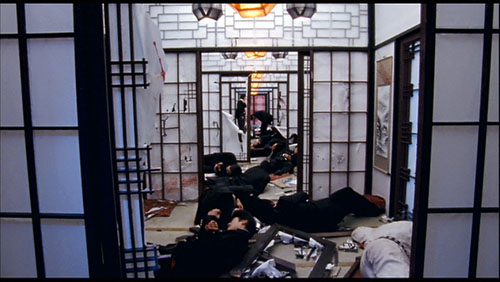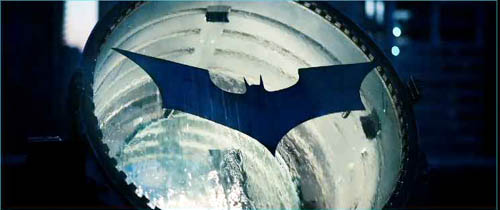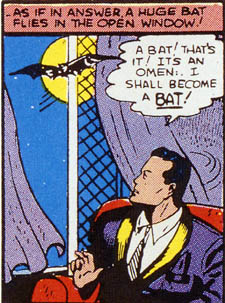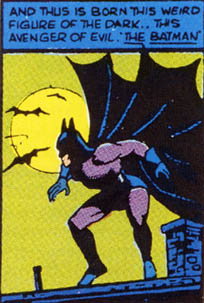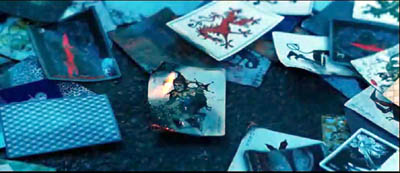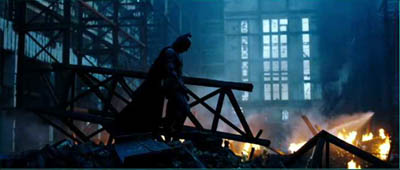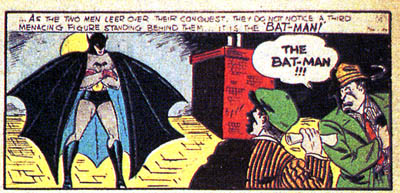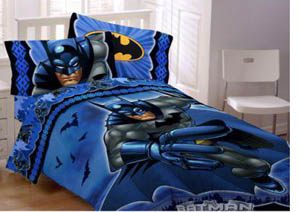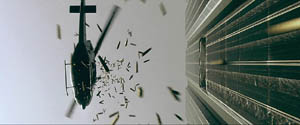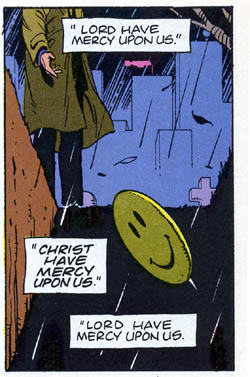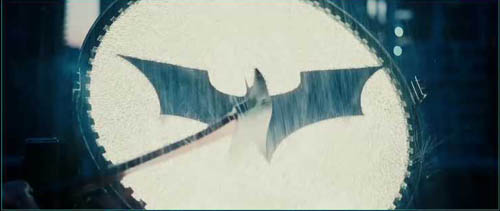Archive for the 'Special effects and CGI' Category
Motion-capturing an Oscar
Kristin here:
Six years ago, when The Lord of the Rings: The Return of the King was nominated for eleven Oscars, there was considerable grumbling over the fact that Andy Serkis was absent from the acting categories. Many argued that his pivotal role in creating Gollum, the first convincing human-like computer-generated character, should have qualified him for a nomination.
Now we’re seeing a similar debate over the lack of actor nominations for Avatar, with Zoe Saldana’s performance as Neytiri especially mentioned as unfairly overlooked. An intriguing article on the subject appeared in the Los Angeles Times a few days ago. In it, James Cameron expresses annoyance with both the Screen Actors Guild and the Academy for the lack of nominations for his actors:
I’m not interested in being an animator. . . . That’s what Pixar does. What I do is talk to actors. ‘Here’s a scene. Let’s see what you can come up with,’ and when I walk away at the end of the day, it’s done in my mind. In the actor’s mind, it’s done. There may be a whole team of animators to make sure what we’ve done is preserved, but that’s their problem. Their job is to use the actor’s performance as an absolute template without variance for what comes out the other end.
Because of innovations in the motion-capture process, including a tiny camera hung in front of an actor’s face to capture its every nuance, Cameron insists on calling the new technology “performance capture.” In some sense it may be true that the performance is preserved, but once the film runs through the theater projector, can the audience really tell what that “template” was like? I think not, and that’s why there is a reluctance to nominate these actors.
Where is the elusive boundary?
Don’t get me wrong. I’m not saying that Zoe Saldana and Andy Serkis aren’t fine performers or that their acting did not contribute enormously to the characters they played. Indeed, Serkis’ mo-cap contribution to the creation of Gollum was originally intended to be far more limited than it turned out to be. His facial expressions and gestures were so useful to the special-effects people that he was involved for a much longer period, and techniques to allow him to perform onset with the other actors were developed.
But however fine the original acting and however great the aid it provides to the special-effects team are, the process doesn’t stop there. To a notable degree other factors intervene between the actors’ original performances and the characters’ final appearance on the screen. Let’s do some comparisons, using the publicity images that the studios themselves considered good indications of how close the expressions of original actors were to those of their characters.
Take the widely circulated image of Saldana juxtaposed with Neytiri shown above. There are numerous differences. For a start, the filmmakers obviously needed to make the Na’vi look like an alien species. They didn’t just give them tails and make them blue and really tall. Human as the creatures seem in many ways, their faces have a subtle suggestion of large felines.
The effectiveness of Neytiri’s snarl has a lot to do with the fact that she has been given exaggeratedly long canine teeth. Moreover, given the changes in the shape of the face, the mouth is not as large proportionately to the entire head as Saldana’s is; the tongue is not nearly as prominent or noticeable. Both tongue and lips are blue as well. All of these features allow the teeth stand out more by contrast.
Na’vi ears are pointed, and some of the lobes are apparently pierced with a small dark disk in the hole. Saldana’s ears played no role in her performance, but the laid-back ears in the Neytiri image, mimicking those of an enraged animal, contribute considerably to the shot’s impact. I remember noticing them while watching the film.
The nose and the wrinkles on and above it have been considerably changed. Unlike human noses, those of the Na’vi are smaller at the bottom than at the top, somewhat resembling lions’ noses. The wrinkles seem to be derived from canine or feline faces as well, extending from the inner end of the eye and arcing down toward the tip of the nose. The human frown lines at the lower center of Saldana’s forehead are transformed into larger, longer, curved wrinkles at either side; these start between the eyebrows and move up and to the sides. There they get extended by the curved areas of darker blue that radiate across the upper forehead, so that the lines of anger seem to cover more of the face. I suspect that relatively little of what the actors did with their noses has survived the special-effects processing. (In the image below, even the shape of Saldana’s naso-labial folds has been slightly altered.)
The change in the eyes is particularly important. Saldana’s eyes have dark irises within which the pupil is barely, if at all, visible. Na’vi eyes are much larger, to begin with, and the irises are light in color, a sort of yellowish tan. The irises fill more of the visible part of the eye, so that the whites of Na’vi eyes are minimized. As a result, the black pupil stands out dramatically. In terms of color, the model seems to be cats’ eyes, though the pupils remain round rather than slits, to avoid making the Na’vi too alien looking. Since the nose has been widened at the top, the eyes are also further apart than on human faces. (The norm with humans is for the eyes to be separated by a distance roughly equal to the width of one eye.)
Even in a less dramatic scene, when Neytiri is relaxed and smiling, some of these differences remain. The pointed ear is not laid back, but it sticks out from the side of the head at an angle that draws the spectator’s attention and makes the human-shaped face seem exotic–especially given that the Na’vis’ ears are placed higher on the skull than human ears are: while the human ear canal is about even with the cheekbone, in the Na’vi it opens at mid-temple level. Although the points of the canine teeth are not visible in this image, the teeth remain prominent because of their bright whiteness against the blue skin. Though partially masked by the headgear, the vaguely feline nose still differs considerably from Saldana’s. In keeping with the extraordinary height of these beings, Saldana’s neck has also been lengthened.
Again, I’m not saying that Saldana and the other actors in Avatar did not contribute enormously to the believability of their characters or that they did not aid us to empathize with them. On the contrary, although the big blue creatures did seem very odd in the trailers and posters, I have to admit that they quickly came to seem like real characters. Their design’s balance of human and alien is remarkable. I did not continually think of them as walking combinations of numerous elaborate special effects. The new facial-capture system renders expressions very well, as the frame at the bottom shows.
What I’ve pointed out here with relation to Saldana’s contributions to the creation of Neytiri applies as well to Serkis’ earlier contributions to Gollum. In the comparison images below, similar changes were made.
While Serkis’ ears were covered, Gollum’s are pointed and prominent. Here, too, the eyes have been enlarged and made a light blue so that the pupils stand out. Where the actor’s teeth are straight and even, Gollum’s are pointed, crooked, and separated by gaps. The cheeks have been hollowed and the eyebrows arched nearly to a point near their outer ends. Crucially, the body has been made inhumanly skinny, with long bony legs and arms that are not apparent in this image. I suspect that some naive audience members believed that a real actor had played Gollum, but to most the scrawny figure was a guarantee that no human could have performed the role. (The very thin waists of the extraterrestrials in District 9 served as a similar guarantee that these were not just guys in monster suits à la Invaders from Mars.)
With all the kinds of changes that I’ve pointed out, how would Academy members be supposed to judge these performances were they to be nominated in the traditional acting categories? Where is the boundary between acting and special effects? Despite actors’ and directors’ claims to the contrary, the movements and expressions caught by performance capture are changed in many obvious and not so obvious ways. A close inspection of the comparison photos reveals the details of the transformation, but in watching the film, the viewer cannot necessarily gauge what sorts of changes were made. I can well imagine that actors like Meryl Streep or Jeff Bridges would be justified if they objected to competing in the same Oscar category as what are essentially hybrid performances seamlessly combining the original acting and the digital transformation.
Possible new categories
One way I can imagine actors competing for awards would be for the Academy to create a separate category for motion-capture performances. To judge such performances fairly, the members would have to see videos running the original performance side-by-side with the finished film. This method might allow them to make a reasonable assessment of what the actor truly contributed.
At this stage in the history of film technology, such a category seems unlikely. So far, not that many people have been spoken of as deserving an Oscar nomination for a mo-cap performance. Even Bill Nighy, who was widely praised for his turn as Davy Jones in the second Pirates of the Caribbean film, was not touted as a possible nominee—probably because his face was so thickly covered with tentacles and partly because comic fantasy films tend not to be Oscar bait. So far the argument has primarily been made for Serkis and Saldana. Plus if the Academy did take the approach of requiring the sort of comparison film I’ve suggested, it would be a difficult and expensive thing to produce. Who knows whether Academy voters would watch five such films?
Maybe, though, as performance capture becomes less expensive and more widely used, there will be enough actors to make up a separate category. We’ve seen the animated-feature category grow from three to five nominees this year, and the number of such films being made suggests that five will become the norm. Animated films and live-action ones heavily dependent on motion-capture are somewhat similar technically, so a new category makes some sense.
A simpler and more logical alternative might be to create a category specifically for vocal performances. As has been pointed out in relation to animated films, an actor who is heard but never seen onscreen could in principle be nominated. Such a thing has never happened, but it’s not against the rules. (It’s easy to imagine that it could have happened for a performance like Celeste Holm’s unseen narrating character in Letter to Three Wives.) But with animated-feature and motion-captured performances becoming more common, a best-vocals category seems to make sense. After all, Serkis and Saldana and others like them do speak their characters’ lines, and their voices are typically not altered or enhanced very much. The digital manipulation of sound still lags considerably behind that of images.
The idea is not exactly a new one. The Annies, the awards given out each year by the International Animated Film Society, has two “Vocal Acting” categories, one each for film and television.
Very similar motion-capture technology can be used to create films that most people would agree are animated (The Polar Express, A Christmas Carol) and others that embed animated characters in a live-action setting (The Lord of the Rings, Avatar). Creating an Oscar category for vocal acting in animation or motion-captured, effects-based performances would make sense.
If actors are not yet being recognized for motion-captured performances, the Academy has been quick to honor the top scientific and technological innovators of the area of motion capture. In 2004, when The Return of the King won its golden statuettes, the less celebrated Academy technical awards included one to the Weta Digital team for its new approach to the creation of Gollum. (The award was shared with ILM for its similar use of the technique in creating Jar Jar Binks.) This year, on February 20, the Academy honored a team that included one Weta Digital member for “the design and engineering of the Light Stage capture devices and the image-based facial rendering system developed for character relighting in motion pictures” which was used on Avatar and The Curious Case of Benjamin Button.
Despite fears that motion-capture may someday make directly photographed actors obsolete, there seems little chance of that happening. These techniques are fantastically expensive and are likely to remain that way for some time to come. There seems little point to using such elaborate technology to make an actor look like a real person when traditional cameras can do it so much more easily, so motion-capture performances seem suitable primarily for fantasy beings who cannot be as believably created in any other way.
Thanks to Cathy Root for calling my attention to the Los Angeles Times article.
February 25: See also Mark Harris’ essay in Entertainment Weekly. He argues that the ineffable qualities of an actor’s performance simply cannot be conveyed through motion-capture.
December 14, 2011: A member of the special-effects team at Weta Digital who worked on Avatar has sent me a comment on this entry: “Your Avatar article nails it–there were so many daily discussions about secondary ear and tail animation!”
May 18, 2014: Thanks to David Cairns for alerting me to two recent items on Cartoon Brew: Amid Amidi’s “Andy Serkis Does Everything, Animators Do Nothing, Says Andy Serkis,” which comments on an interview with Serkis on io9, and Amidi’s follow-up interview with Lord of the Rings animation supervisor Randall William Cook, which quite convincingly argues that the animators changed and extended Serkis’ performance.
A glance at blows
DB here:
Perhaps it came from watching the Odessa Steps sequence, projected in hazy 8mm, on the bedroom wall during my teenage years. Or maybe it was seeing my first Bruce Lee movie in the early 1970s. In any case, at some point I became a connoisseur of action sequences. Eventually I was able to indulge this tendency by writing about Eisenstein, but also by studying Asian action film.
I became convinced that martial arts movies from Japan and Hong Kong constituted as important a contribution to film aesthetics as did the Soviet Montage movement. Through shot-by-shot and even frame-by-frame analysis, I tried to show that these movies were exploring ways that cinema could arouse us kinesthetically. Their use of composition, cutting, color, music, and physical motion was not only beautiful but also engaging on levels that we didn’t fully understand. (Perhaps now that we know about mirror neurons we’re in a better position.) Certain turns in the action make us laugh, but not in derision. We laugh in jubilation, and sometimes out of admiration for sheer audacity. At their most ambitious, these films achieved the physical-emotional ecstasy that Eisenstein found in sharply executed “expressive movement.”
A jolting blur
So it was with a definite sadness that I watched, from the 1980s onward, the tendency of American filmmakers to give up on rendering physical movement with full force. Action sequences became jumbled arrays of short shots and bumpy framings. The clarity and grace of motion seen in classic Westerns and comedies, in the work of Keaton and Lloyd and Ford and Don Siegel and Anthony Mann, gave way to spasmodic fights and geographically challenged chases. At first, the chief perpetrators were Roger Spottiswoode and Michael Bay. Now it’s nearly everybody, and journalistic critics have recognized that this lumpy style has become the norm, even in the generally admired Bourne entries.
Classic Hong Kong and Japanese action scenes were “expressionistic” in the sense that their larger-than-life balletics and aerobatics amplified recognizable (if extreme) possibilities of the human body. The result was a carnal cinema, in which shooting and cutting aimed to enlarge and prolong graceful movement. By contrast, Hollywood action scenes became “impressionistic,” rendering a combat or pursuit as a blurred confusion. We got a flurry of cuts calibrated not in relation to each other or to the action, but instead suggesting a vast busyness. Here camerawork and editing didn’t serve the specificity of the action but overwhelmed, even buried it.
Why is the filmmaker reluctant to face the concrete, moment-by-moment facts of the fight? Maybe it’s fear of censorship, or maybe it’s just lack of interest in physical processes. By contrast, most of the great Hong Kong action directors have been themselves martial artists. To them a fight is a suite of tangible actions and micro-actions. Or maybe the new muddier approach seeks to hide the fact that the action is preposterous. Western audiences don’t like far-fetched action that isn’t comic, but the new action picture is touted as a return to realism. Bond is tough and Jason Bourne’s adventures are “gritty.” Yet realism comes at a price, in this case the loss of bodily movements elegant in their efficiency.
Defenders of the impressionistic approach say that it renders “what the action feels like.” But that would entail that the action feels fast and confusing. To whom? Maybe to a duffer like me, if I were dropped into the melee, but not to trained fighters. Bourne isn’t confused: his senses are alert, and his gestures are economical and smooth. So why render the scene as chaotic and show his gestures in jerky cuts? Any fighter overcome by the sensory overload handed to us would lose big.
The classic Asian approach also tries to make us experience how the action feels, but it starts by taking pains to show how it looks. Hong Kong filmmakers constructed a sequence on a firm foundation, and that meant making each shot impossible to misunderstand. They then built those crisp images into what I called the pause/ burst/ pause structure. This simple pattern, capable of great variation. creates a staccato exhilaration.
How? Here’s a first approximation. The stylistic orchestration of the fight trips off optical, auditory, and muscular responses in our bodies, while the pauses give the movement a chance to echo. Instead of a vague busyness, a sense that something really frantic but imprecise is happening, we get a marked rhythm alternating an exact visceral impact with tingling aftereffects. Eisenstein believed that when we see an expressive movement, we reflexively repeat that movement, albeit in weakened form. After one of these sequences you feel tired, but in a good way. We’ve been given a taste of what physical mastery feels like.
Transport
Compare the action scenes of the first Transporter film (2002) with those of Transporter 3 of this year. The first, directed by Hong Kong veteran Yuen Kwai (aka Corey Yuen), isn’t a patch on his best home-ground work (Ninja in the Dragon’s Den, Righting Wrongs, Yes, Madam!, Saviour of the Soul), but the bigger budget provided by Luc Besson gave him a chance to put Jason Statham through some energetic paces, particularly on the oil-slicked floor of a bus garage.
Yuen, a director who sacrifices even dialogue to pictorial rhythm, is fond of percussive insert shots (e.g., the garage scene’s crackling close-ups of Statham snapping bike pedals onto his shoes) and steep, tight angles that spread all of a fight’s players into a diagrammatic composition.
But Transporter 3, choreographed but not directed by Yuen, has buried precise, bone-whacking action under freeze-frames, superimpositions, ramping, color shifts, and other Tony Scott doodling.
Something more sober but just as nerveless is at work in Quantum of Solace. Here the jabbing handheld work of the Bourne pictures has been replaced by steadier framing and smoother traveling shots, but the hyperkinetic, what-did-I-just-see cutting is still there. Again, I think that the filmmakers are worried about the implausibility of the action scenes and so muffles them by a haphazard handling.
Back to basics
Most discouraging has been the way that many Asian filmmakers have taken up the Hollywood approach. Today’s standard Hong Kong action picture is likely to be as visually and kinetically disorganized as the Hollywood product. That’s why I can recommend, as a palate-cleanser if nothing else, Ryoo Sung-wan’s City of Violence (2006), a Korean film recently made available on DVD from Dragon Dynasty.
It is unapologetically formulaic. Pals in a teenage gang grow up to be gangsters and cops. Our protagonist, a big-city cop, returns to the hometown to discover that the weakest of the old crew has become a sadistic overlord. Fights ensue, culminating in a twenty-minute battle in which the hero and another schoolmate penetrate a restaurant where the villain is celebrating his new status. Thrashing their way through a crowded courtyard, then through a narrow tunnel of dining rooms, and finally into a two-story banquet hall, our heroes confront increasingly skilful fighters and eventually face off against their boyhood friend.
Ryoo keeps the action scenes fairly brisk and inventive. The most impressive early one shows the hero surrounded by a battalion of young thugs in a nighttime boulevard. The teens, in an obvious bow to The Warriors, come dressed in ingenious uniforms and display alarming skills with hockey sticks and baseball bats. As in Hong Kong films, judicious long shots keep us oriented to phases of the action.
Borrowing unashamedly from John Woo’s Better Tomorrow series and countless Japanese swordplay films, City of Violence shows flashes of pictorial wit. The cop and his pal realize they’re confronting a platoon of bodyguards at supper when doors slide open to reveal a tunnel-vision perspective of fighters, blobs of black broken rhythmically by women’s pastel outfits.
The film flaunts vivid color and icy focus in a way that much more expensive Hollywood genre movies, with their brackish palettes and soft edges, mostly avoid. (The realism alibi, again.) Even Ryoo’s use of CGI is playfully pretty, in a way that Casino Royale could be only in its credits sequence. Here the gang lord realizes his old pals are approaching.
I don’t want to oversell this film, but it does show that the classic Asian tradition has not expired. Running under ninety minutes without credits, City of Violence aims at nothing more than telling a familiar story with vigor—along the way making us gape and flinch. In a good way.
For arguments about Eisenstein and expressive movement, see my Cinema of Eisenstein, new ed. (Routledge, 2005). The case for Japanese and Hong Kong action films is made in Chapters 12-15 of Poetics of Cinema, and the pause/ burst/ pause pattern is analyzed in Chapter 8 of Planet Hong Kong: Popular Cinema and the Art of Entertainment. There, among other things, I try to give Yuen Kwai his due.
Superheroes for sale
DB here:
After a day at the movies, maybe I am living in a parallel universe. I go to see two films praised by people whose tastes I respect. I find myself bored and depressed. I’m also asking questions.
Over the twenty years since Batman (1989), and especially in the last decade or so, some tentpole pictures, and many movies at lower budget levels, have featured superheroes from the Golden and Silver age of comic books. By my count, since 2002, there have been between three and seven comic-book superhero movies released every year. (I’m not counting other movies derived from comic books or characters, like Richie Rich or Ghost World.)
Until quite recently, superheroes haven’t been the biggest money-spinners. Only eleven of the top 100 films on Box Office Mojo’s current worldwide-grosser list are derived from comics, and none ranks in the top ten titles. But things are changing. For nearly every year since 2000, at least one title has made it into the list of top twenty worldwide grossers. For most years two titles have cracked this list, and in 2007 there were three. This year three films have already arrived in the global top twenty: The Dark Knight, Iron Man, and The Incredible Hulk (four, if you count Wanted as a superhero movie).
This 2008 successes have vindicated Marvel’s long-term strategy to invest directly in movies and have spurred Warners to slate more comic-book titles. David S. Cohen analyses this new market here. So we are clearly in the midst of a Trend. My trip to the multiplex got me asking: What has enabled superhero comic-book movies to blast into a central spot in today’s blockbuster economy?
Enter the comic-book guys
It’s clearly not due to a boom in comic-book reading. Superhero books have not commanded a wide audience for a long time. Statistics on comic-book readership are closely guarded, but the expert commentator John Jackson Miller reports that back in 1959, at least 26 million comic books were sold every month. In the highest month of 2006, comic shops ordered, by Miller’s estimate, about 8 million books (and this total includes not only periodical comics but graphic novels, independent comics, and non-superhero titles). There have been upticks and downturns over the decades, but the overall pattern is a steep slump.
Try to buy an old-fashioned comic book, with staples and floppy covers, and you’ll have to look hard. You can get albums and graphic novels at the chain stores like Borders, but not the monthly periodicals. For those you have to go to a comics shop, and Hank Luttrell, one of my local purveyors of comics, estimates there aren’t more than 1000 of them in the U. S.
Moreover, there’s still a stigma attached to reading superhero comics. Even kitsch novels have long had a slightly higher cultural standing than comic books. Admitting you had read The Devil Wears Prada would be less embarrassing than admitting you read Daredevil.
For such reasons and others, the audience for superhero comics is far smaller than the audience for superhero movies. The movies seem to float pretty free of their origins; you can imagine a young Spider-Man fan who loved the series but never knew the books. What’s going on?
Men in tights, and iron pants
The films that disappointed me on that moviegoing day were Iron Man and The Dark Knight. The first seemed to me an ordinary comic-book movie endowed with verve by Robert Downey Jr.’s performance. While he’s thought of as a versatile actor, Downey also has a star persona—the guy who’s wound a few turns too tight, putting up a good front with rapid-fire patter (see Home for the Holidays, Wonder Boys, Kiss Kiss Bang Bang, Zodiac). Downey’s cynical chatterbox makes Iron Man watchable. When he’s not onscreen we get excelsior.
Christopher Nolan showed himself a clever director in Memento and a promising one in The Prestige. So how did he manage to make The Dark Knight such a portentously hollow movie? Apart from enjoying seeing Hong Kong in Imax, I was struck by the repetition of gimmicky situations–disguises, hostage-taking, ticking bombs, characters dangling over a skyscraper abyss, who’s dead really once and for all? The fights and chases were as unintelligible as most such sequences are nowadays, and the usual roaming-camera formulas were applied without much variety. Shoot lots of singles, track slowly in on everybody who’s speaking, spin a circle around characters now and then, and transition to a new scene with a quick airborne shot of a cityscape. Like Jim Emerson, I thought that everything hurtled along at the same aggressive pace. If I want an arch-criminal caper aiming for shock, emotional distress, and political comment, I’ll take Benny Chan’s New Police Story.
Then there are the mouths. This is a movie about mouths. I couldn’t stop staring at them. Given Batman’s cowl and his husky whisper, you practically have to lip-read his lines. Harvey Dent’s vagrant facial parts are especially engaging around the jaws, and of course the Joker’s double rictus dominates his face. Gradually I found Maggie Gyllenhaal’s spoonbill lips starting to look peculiar.
The expository scenes were played with a somber knowingness I found stifling. Quoting lame dialogue is one of the handiest weapons in a critic’s arsenal and I usually don’t resort to it; many very good movies are weak on this front. Still, I can’t resist feeling that some weighty lines were doing duty for extended dramatic development, trying to convince me that enormous issues were churning underneath all the heists, fights, and chases. Know your limits, Master Wayne. Or: Some men just want to watch the world burn. Or: In their last moments people show you who they really are. Or: The night is darkest before the dawn.
I want to ask: Why so serious?
Odds are you think better of Iron Man and The Dark Knight than I do. That debate will go on for years. My purpose here is to explore a historical question: Why comic-book superhero movies now?
Z as in Zeitgeist
More superhero movies after 2002, you say? Obviously 9/11 so traumatized us that we feel a yearning for superheroes to protect us. Our old friend the zeitgeist furnishes an explanation. Every popular movie can be read as taking the pulse of the public mood or the national unconscious.
I’ve argued against zeitgeist readings in Poetics of Cinema, so I’ll just mention some problems with them:
*A zeitgeist is hard to pin down. There’s no reason to think that the millions of people who go to the movies share the same values, attitudes, moods, or opinions. In fact, all the measures we have of these things show that people differ greatly along all these dimensions. I suspect that the main reason we think there’s a zeitgeist is that we can find it in popular culture. But we would need to find it independently, in our everyday lives, to show that popular culture reflects it.
*So many different movies are popular at any moment that we’d have to posit a pretty fragmented national psyche. Right now, it seems, we affirm heroic achievement (Indiana Jones and the Kingdom of the Crystal Skull, Kung Fu Panda, Prince Caspian) except when we don’t (Get Smart, The Dark Knight). So maybe the zeitgeist is somehow split? That leads to vacuity, since that answer can accommodate an indefinitely large number of movies. (We’d have to add fractions of our psyche that are solicited by Sex and the City and Horton Hears a Who!)
*The movie audience isn’t a good cross-section of the general public. The demographic profile tilts very young and moderately affluent. Movies are largely a middle-class teenage and twentysomething form. When a producer says her movie is trying to catch the zeitgeist, she’s not tracking retired guys in Arizona wearing white belts; she’s thinking mostly of the tastes of kids in baseball caps and draggy jeans.
* Just because a movie is popular doesn’t mean that people have found the same meanings in it that critics do. Interpretation is a matter of constructing meaning out of what a movie puts before us, not finding the buried treasure, and there’s no guarantee that the critic’s construal conforms to any audience member’s.
*Critics tend to think that if a movie is popular, it reflects the populace. But a ticket is not a vote for the movie’s values. I may like or dislike it, and I may do either for reasons that have nothing to do with its projection of my hidden anxieties.
*Many Hollywood films are popular abroad, in nations presumably possessing a different zeitgeist or national unconscious. How can that work? Or do audiences on different continents share the same zeitgeist?
Wait, somebody will reply, The Dark Knight is a special case! Nolan and his collaborators have strewn the film with references to post-9/11 policies about torture and surveillance. What, though, is the film saying about those policies? The blogosphere is already ablaze with discussions of whether the film supports or criticizes Bush’s White House. And the Editorial Board of the good, gray Times has noticed:
It does not take a lot of imagination to see the new Batman movie that is setting box office records, The Dark Knight, as something of a commentary on the war on terror.
You said it! Takes no imagination at all. But what is the commentary? The Board decides that the water is murky, that some elements of the movie line up on one side, some on the other. The result: “Societies get the heroes they deserve,” which is virtually a line from the movie.
I remember walking out of Patton (1970) with a hippie friend who loved it. He claimed that it showed how vicious the military was, by portraying a hero as an egotistical nutcase. That wasn’t the reading offered by a veteran I once talked to, who considered the film a tribute to a great warrior.
It was then I began to suspect that Hollywood movies are usually strategically ambiguous about politics. You can read them in a lot of different ways, and that ambivalence is more or less deliberate.
A Hollywood film tends to pose sharp moral polarities and then fuzz or fudge or rush past settling them. For instance, take The Bourne Ultimatum: Yes, the espionage system is corrupt, but there is one honorable agent who will leak the information, and the press will expose it all, and the malefactors will be jailed. This tactic hasn’t had a great track record in real life.
The constitutive ambiguity of Hollywood movies helpfully disarms criticisms from interest groups (“Look at the positive points we put in”). It also gives the film an air of moral seriousness (“See, things aren’t simple; there are gray areas”). That’s the bait the Times writers took.
I’m not saying that films can’t carry an intentional message. Bryan Singer and Ian McKellen claim the X-Men series criticizes prejudice against gays and minorities. Nor am I saying that an ambivalent film comes from its makers delicately implanting counterbalancing clues. Sometimes they probably do. More often, I think, filmmakers pluck out bits of cultural flotsam opportunistically, stirring it all together and offering it up to see if we like the taste. It’s in filmmakers’ interests to push a lot of our buttons without worrying whether what comes out is a coherent intellectual position. Patton grabbed people and got them talking, and that was enough to create a cultural event. Ditto The Dark Knight.
Back to basics
If the zeitgeist doesn’t explain the flourishing of the superhero movie in the last few years, what does? I offer some suggestions. They’re based on my hunch that the genre has brought together several trends in contemporary Hollywood film. These trends, which can commingle, were around before 2000, but they seem to be developing in a way that has created a niche for the superhero film.
The changing hierarchy of genres. Not all genres are created equal, and they rise or fall in status. As the Western and the musical fell in the 1970s, the urban crime film, horror, and science-fiction rose. For a long time, it would be unthinkable for an A-list director to do a horror or science-fiction movie, but that changed after Polanski, Kubrick, Ridley Scott, et al. gave those genres a fresh luster just by their participation. More recently, I argue in The Way Hollywood Tells It, the fantasy film arrived as a respectable genre, as measured by box-office receipts, critical respect, and awards. It seems that the sword-and-sorcery movie reached its full rehabilitation when The Lord of the Rings: The Return of the King scored its eleven Academy Awards.
The comic-book movie has had a longer slog from the B- and sub-B-regions. Superman, Flash Gordon, and Dick Tracy were all fodder for serials and low-budget fare. Prince Valiant (1954) was the only comics-derived movie of any standing in the 1950s, as I recall, and you can argue that it fitted into a cycle of widescreen costume pictures. (Though it looks like a pretty camp undertaking today.) Much later came revivals of the two most popular superheroes, Superman (1978) and Batman (1989).
The success of the Batman film, which was carefully orchestrated by Warners and its DC comics subsidiary, can be seen as preparing the grounds for today’s superhero franchises. The idea was to avoid simply reiterating a series, as the Superman movie did, or mocking it, as the Batman TV show did. The purpose was to “reimagine” the series, to “reboot” it as we now say, the way Frank Miller’s The Dark Knight Returns re-launched the Batman comic. Rebooting modernizes the mythos by reinterpreting it in a thematically serious and graphically daring way.
During the 1990s, less famous superheroes filled in as the Batman franchise tailed off. Examples were The Rocketeer (1991), Timecop (1994), The Crow (1994) and The Crow: City of Angels (1996), Judge Dredd (1995), Men in Black (1997), Spawn (1997), Blade (1998), and Mystery Men (1999). Most of these managed to fuse their appeals with those of another parvenu genre, the kinetic action-adventure movie.
Significantly, these were typically medium-budget films from semi-independent companies. Although some failed, a few were huge and many earned well, especially once home video was reckoned in. Moreover, the growing number of titles, sometimes featuring name actors, fueled a sense that this genre was becoming important. As often happens, marginal companies developed the market more nimbly than the big ones, who tend to move in once the market has matured.
I’d also suggest that The Matrix (1999) helped legitimize the cycle. (Neo isn’t a superhero? In the final scene he can fly.) The pseudophilosophical aura this movie radiated, as well as its easy familiarity with comics, videogames, and the Web, made it irrevocably cool. Now ambitious young directors like Nolan, Singer, and Brett Ratner could sign such projects with no sense they were going downmarket.
The importance of special effects. Arguably there were no fundamental breakthroughs in special-effects technology from the 1940s to the 1960s. But with motion-control cinematography, showcased in the first Star Wars installment (1977) filmmakers could create a new level of realism in the use of miniatures. Later developments in matte work, blue- and green-screen techniques, and digital imagery were suited to, and driven by, the other genres that were on the rise—horror, science-fiction, and fantasy—but comic-book movies benefited as well. The tagline for Superman was “You’ll believe a man can fly.”
Special effects thereby became one of a film’s attractions. Instead of hiding the technique, films flaunted it as a mark of big budgets and technological sophistication. The fantastic powers of superheroes cried out for CGI, and it may be that convincing movies in the genre weren’t really ready until the software matured.
The rise of franchises. Studios have always sought predictability, and the classic studio system relied on stars and genres to encourage the audience to return for more of what it liked. But as film attendance waned, producers looked for other models. One that was successful was the branded series, epitomized in the James Bond films. With the rise of the summer blockbuster, producers searched for properties that could be exploited in a string of movies. A memorable character could tie the installments together, and so filmmakers turned to pop literature (e.g., the Harry Potter books) and comic books. Today, Marvel Enterprises is less concerned with publishing comics than with creating film vehicles for its 5000 characters. Indeed, to get bank financing it put up ten of its characters as collateral!
Yet a single character might not sustain a robust franchise. Henry Jenkins has written about how popular culture is gravitating to multi-character “worlds” that allow different media texts to be carved out of them. Now that periodical sales of comics have flagged, the tail is wagging the dog. The 5000 characters in the Marvel Universe furnish endless franchise opportunities. If you stayed for the credit cookie at the end of Iron Man, you saw the setup for a sequel that will pair the hero with at least one more Marvel protagonist.
Merchandising and corporate synergy. It’s too obvious to dwell on, but superhero movies fit neatly into the demand that franchises should spawn books, TV shows, soundtracks, toys, apparel, and so on. Time Warner’s acquisition of DC Comics was crucial to the cross-platform marketing of the first Batman. Moreover, most comics readers are relatively affluent (a big change from my boyhood), so they have the income to buy action figures and other pricy collectibles, like a Batbed.
The shift from an auteur cinema to a genre cinema. The classic studio system maintained a fruitful, sometimes tense, balance between directorial expression and genre demands. Somewhere in recent decades that balance has split into polarities. We now have big-budget genre films that made by directors of no discernible individuality, and small “personal” films that showcase the director’s sensibility. There have always been impersonal craftsmen in Hollywood, but the most distinctive directors could often bring their own sensibilities to projects big or small.
David Lynch could make Dune (1984) part of his own oeuvre, but since then we have many big-budget genre pictures that bear no signs of directorial individuality. In particular, science-fiction, fantasy, and superhero movies demand so much high-tech input, so much preparation, so many logistical tasks in shooting, and such intensive postproduction, that economy of effort favors a standardized look and feel. Hence perhaps the recourse to well-established techniques of shooting and cutting; intensified continuity provides a line of least resistance. A comic-book movie can succeed if it doesn’t stray from the fanbase’s expectations and swiftly initiates the newbies. Not much directorial finesse is needed, as 300 (2007) shows.
The development of the megapicture may have led the more talented directors to the “one for them, one for me” motto. Think of the difference between Burton’s Planet of the Apes or even Sweeney Todd and, say, Ed Wood or Big Fish. Or think of the moments of elegance in Memento and The Prestige, as opposed to the blunt handling of Batman Begins and The Dark Knight.
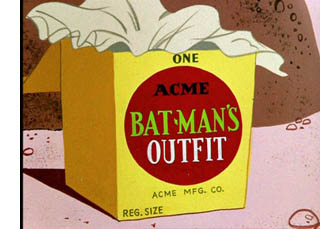 Shock and awe in presentation. The rise of the multiplex meant not only an upgrade in comfort (my back appreciates the tilting seats) but also a demand for big pictures and big sound. Smaller, more intimate movies look woeful on your megascreen, and what’s the point of Dolby surround channels if you’re watching a Woody Allen picture? Like science-fiction and fantasy, the adventures of a superhero in yawning landscapes fill the demand for immersion in a punchy, visceral entertainment. Scaling the film for Imax, as Superman Returns and The Dark Knight have, is the next step in this escalation.
Shock and awe in presentation. The rise of the multiplex meant not only an upgrade in comfort (my back appreciates the tilting seats) but also a demand for big pictures and big sound. Smaller, more intimate movies look woeful on your megascreen, and what’s the point of Dolby surround channels if you’re watching a Woody Allen picture? Like science-fiction and fantasy, the adventures of a superhero in yawning landscapes fill the demand for immersion in a punchy, visceral entertainment. Scaling the film for Imax, as Superman Returns and The Dark Knight have, is the next step in this escalation.
Too much is never enough. Since the 1980s, mass-audience pictures have gravitated toward ever more exaggerated presentation of momentary effects. In a comedy, if a car is about to crash, everyone inside must stare at the camera and shriek in concert. Extreme wide-angle shooting makes faces funny in themselves (or so Barry Sonnenfeld thinks). Action movies shift from slo-mo to fast-mo to reverse-mo, all stitched together by ramping, because somebody thinks these devices make for eye candy. Steep high and low angles, familiar in 1940s noir films, were picked up in comics, which in turn re-influenced movies.
Movies now love to make everything airborne, even the penny in Ghost. Things fly out at us, and thanks to surround channels we can hear them after they pass. It’s not enough simply to fire an arrow or bullet; the camera has to ride the projectile to its destination—or, in Wanted, from its target back to its source. In 21 of earlier this year, blackjack is given a monumentality more appropriate to buildings slated for demolition: giant playing cards whoosh like Stealth fighters or topple like brick walls.
I’m not against such one-off bursts of imagery. There’s an undoubted wow factor in seeing spent bullet casings shower into our face in The Matrix.
I just ask: What do such images remind us of? My answer: Comic book panels, those graphically dynamic compositions that keep us turning the pages. In fact, we call such effects “cartoonish.” Here’s an example from Watchmen, where the slow-motion effect of the Smiley pin floating down toward us is sustained by a series of lines of dialogue from the funeral service.
With comic-book imagery showing up in non-comic-book movies, one source may be greater reliance on storyboards and animatics. Spfx demand intensive planning, so detailed storyboarding was a necessity. Once you’re planning shot by shot, why not create very fancy compositions in previsualization? Spielberg seems to me the live-action master of “storyboard cinema.” And of course storyboards look like comic-book pages.
The hambone factor. In the studio era, star acting ruled. A star carried her or his persona (literally, mask) from project to project. Parker Tyler once compared Hollywood star acting to a charade; we always recognized the person underneath the mime.
This is not to say that the stars were mannequins or dead meat. Rather, like a sculptor who reshapes a piece of wood, a star remolded the persona to the project. Cary Grant was always Cary Grant, with that implausible accent, but the Cary Grant of Only Angels Have Wings is not that of His Girl Friday or Suspicion or Notorious or Arsenic and Old Lace. Or compare Barbara Stanwyck in The Lady Eve, Double Indemnity, and Meet John Doe. Young Mr. Lincoln is not the same character as Mr. Roberts, but both are recognizably Henry Fonda.
Dress them up as you like, but their bearing and especially their voices would always betray them. As Mr. Kralik in The Shop around the Corner, James Stewart talks like Mr. Smith on his way to Washington. In The Little Foxes, Herbert Marshall and Bette Davis sound about as southern as I do.
Star acting persisted into the 1960s, with Fonda, Stewart, Wayne, Crawford, and other granitic survivors of the studio era finishing out their careers. Star acting continues in what scholar Steve Seidman has called “comedian comedy,” from Jerry Lewis to Adam Sandler and Jack Black. Their characters are usually the same guy, again. Arguably some women, like Sandra Bullock and Ashlee Judd, also continued the tradition.
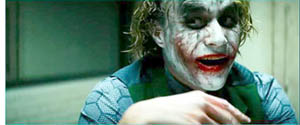 On the whole, though, the most highly regarded acting has moved closer to impersonation. Today your serious actors shape-shift for every project—acquiring accents, burying their faces in makeup, gaining or losing weight. We might be inclined to blame the Method, but classical actors went through the same discipline. Olivier, with his false noses and endless vocal range, might be the impersonators’ patron saint. His followers include Streep, Our Lady of Accents, and the self-flagellating young De Niro. Ironically, although today’s performance-as-impersonation aims at greater naturalness, it projects a flamboyance that advertises its mechanics. It can even look hammy. Thus, as so often, does realism breed artifice.
On the whole, though, the most highly regarded acting has moved closer to impersonation. Today your serious actors shape-shift for every project—acquiring accents, burying their faces in makeup, gaining or losing weight. We might be inclined to blame the Method, but classical actors went through the same discipline. Olivier, with his false noses and endless vocal range, might be the impersonators’ patron saint. His followers include Streep, Our Lady of Accents, and the self-flagellating young De Niro. Ironically, although today’s performance-as-impersonation aims at greater naturalness, it projects a flamboyance that advertises its mechanics. It can even look hammy. Thus, as so often, does realism breed artifice.
Horror and comic-book movies offer ripe opportunities for this sort of masquerade. In a straight drama, confined by realism, you usually can’t go over the top, but given the role of Hannibal Lector, there is no top. The awesome villain is a playground for the virtuoso, or the virtuoso in training. You can overplay, underplay, or over-underplay. You can also shift registers with no warning, as when hambone supreme Orson Welles would switch from a whisper to a bellow. More often now we get the flip from menace to gargoylish humor. Jack Nicholson’s “Heeere’s Johnny” in The Shining is iconic in this respect. In classic Hollywood, humor was used to strengthen sentiment, but now it’s used to dilute violence.
Such is the range we find in The Dark Knight. True, some players turn in fairly low-key work. Morgan Freeman plays Morgan Freeman, Michael Caine does his usual punctilious job, and Gary Oldman seems to have stumbled in from an ordinary crime film. Maggie Gylenhaal and Aaron Eckhart provide a degree of normality by only slightly overplaying; even after Harvey Dent’s fiery makeover Eckhart treats the role as no occasion for theatrics.
All else is Guignol. The Joker’s darting eyes, waggling brows, chortles, and restless licking of his lips send every bit of dialogue Special Delivery. Ledger’s performance has been much praised, but what would count as a bad line reading here? The part seems designed for scenery-chewing. By contrast, poor Bale has little to work with. As Bruce Wayne, he must be stiff as a plank, kissing Rachel while keeping one hand suavely tucked in his pocket, GQ style. In his Bat-cowl, he’s missing as much acreage of his face as Dent is, so all Bale has is the voice, over-underplayed as a hoarse bark.
In sum, our principals are sweating through their scenes. You get no strokes for making it look easy, but if you work really hard you might get an Oscar.
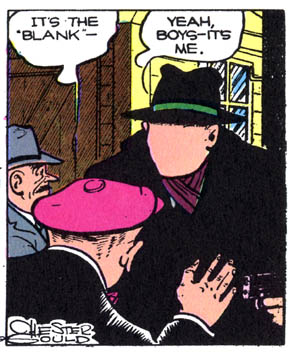 A taste for the grotesque. Horror films have always played on bodily distortions and decay, but The Exorcist (1973) raised the bar for what sorts of enticing deformities could be shown to mainstream audiences. Thanks to new special effects, movies like Total Recall (1990) were giving us cartoonish exaggerations of heads and appendages.
A taste for the grotesque. Horror films have always played on bodily distortions and decay, but The Exorcist (1973) raised the bar for what sorts of enticing deformities could be shown to mainstream audiences. Thanks to new special effects, movies like Total Recall (1990) were giving us cartoonish exaggerations of heads and appendages.
But of course the caricaturists got here first, from Hogarth and Daumier onward. Most memorably, Chester Gould’s Dick Tracy strip offered a parade of mutilated villains like Flattop, the Brow, the Mole, and the Blank, a gentleman who was literally defaced. The Batman comics followed Gould in giving the protagonist an array of adversaries who would even raise an eyebrow in a Manhattan subway car.
Eisenstein once argued that horrific grotesquerie was unstable and hard to sustain. He thought that it teetered between the comic-grotesque and the pathetic-grotesque. That’s the difference, I suppose, between Beetlejuice and Edward Scissorhands, or between the Joker and Harvey Dent. In any case, in all its guises the grotesque is available to our comic-book pictures, and it plays nicely into the oversize acting style that’s coming into favor.
You’re thinking that I’ve gone on way too long, and you’re right. Yet I can’t withhold two more quickies:
The global recognition of anime and Hong Kong swordplay films. During the climactic battle between Iron Man 2.0 and 3.0, so reminiscent of Transformers, I thought: “The mecha look has won.”
Learning to love the dark. That is, filmmakers’ current belief that “dark” themes, carried by monochrome cinematography, somehow carry more prestige than light ones in a wide palette. This parallels comics’ urge for legitimacy by treating serious subjects in somber hues, especially in graphic novels.
Time to stop! This is, after all, just a list of causes and conditions that occurred to me after my day in the multiplex. I’m sure we can find others. Still, factors like these seem to me more precise and proximate causes for the surge in comic-book films than a vague sense that we need these heroes now. These heroes have been around for fifty years, so in some sense they’ve always been needed, and somebody may still need them. The major media companies, for sure. Gazillions of fans, apparently. Me, not so much. But after Hellboy II: The Golden Army I live in hope.
Thanks to Hank Luttrell for information about the history of the comics market.
The superhero rankings I mentioned are: Spider-Man 3 (no. 12), Spider-Man (no. 17), Spider-Man 2 (no. 23), The Dark Knight (currently at no. 29, but that will change), Men in Black (no. 42), Iron Man (no. 45), X-Men: The Last Stand (no. 75), 300 (no. 80), Men in Black II (no. 85), Batman (no. 95), and X2: X-Men United (no. 98). The usual caveat applies: This list is based on unadjusted grosses and so favors recent titles, because of inflation and the increased ticket prices. If you adjust for these factors, the list of 100 all-time top grossers includes seven comics titles, with the highest-ranking one being Spider-Man, at no. 33.
For a thoughtful essay written just as the trend was starting, see Ken Tucker’s 2000 Entertainment Weekly piece, “Caped Fears.” It’s incompletely available here.
Comics aficionados may object that I am obviously against comics as a whole. True, I have little interest in superhero comic books. As a boy I read the DC titles, but I preferred Mad, Archie, Uncle Scrooge, and Little Lulu. In high school and college I missed the whole Marvel revolution and never caught up. Like everybody else in the 1980s I read The Dark Knight Returns, but I preferred Watchmen (and I look forward to the movie). I like the Hellboy movies too. But I’m not gripped by many of the newest trends in comics. Sin City strikes me as a fastidious piece of draftsmanship exercised on formulaic material, as if Mickey Spillane were rewritten by Nicholson Baker. Since the 80s my tastes have run to Ware, Clowes, a few manga, and especially Eurocomics derived from the clear-line tradition (Chaland, Floc’h, Swarte, etc.). I believe that McCay and Herriman are major twentieth-century artists, with Chester Gould and Cliff Sterrett worth considering for the honor too.
You can argue that Oliver Stone’s films create ambivalence inadvertently. JFK seems to have a clear-cut message, but the plotting is diverted by so many conspiracy scenarios that the viewer might get confused about what exactly Stone is claiming really happened.
On the ways that worldmaking replaces character-centered media storytelling, the crucial discussion is in Henry Jenkins, Convergence Culture: Where Old and New Media Collide (New York University Press, 2007), 113-122.
On franchise-building, see the detailed account in detail in Eileen R. Meehan, “‘Holy Commodity Fetish, Batman!’: The Political Economy of a Commercial Intertext,” in The Many Lives of the Batman, ed. Roberta E. Pearson and William Uricchio (Routledge, 1991), 47-65. Other essays in this collection offer information on the strategies of franchise-building.
Just as Star Wars helped legitimate itself by including Alec Guinness in its cast (surely he wouldn’t be in a potboiler), several superhero movies have a proclivity for including a touch of British class: McKellan and Stewart in X-Men, Caine in the Batman series. These old reliables like to keep busy and earn a spot of cash.
PS: 21 August 2008: This post has gotten some intriguing responses, both on the Internets and in correspondence with me, so I’m adding a few here.
Jim Emerson elaborated on the zeitgeist motif in an entry at Scanners. At Crooked Timber, John Holbo examines how much the film’s dark cast owes to the 1990s reincarnation of Batman. Peter Coogan writes to tell me that he makes a narrower version of the zeitgeist argument in relation to superheroes in Chapter 10 of his book, Superhero: The Secret Origin of a Genre, to be reprinted next year. Even the more moderate form he proposes doesn’t convince me, I’m afraid, but the book ought to be of value to readers interested in the genre.
From Stew Fyfe comes a letter offering some corrections and qualifications.
*Stew points out that chain stores like Borders do sell some periodical comics titles, though not always regularly.
*Comics publishing, while not at the circulation levels seen in the golden era, is undergoing something of a resurgence now, possibly because of the success of the franchise movies. Watchmen sales alone will be a big bump in anticipation of the movie.
*As for my claim that film is driving the publishing side, Stew suggests that the relations between the media are more complicated. The idea that the tail wags the dog might apply to DC, but Marvel has made efforts to diversify the relations between the books and the films.
They’ve done things like replacing the Hulk with a red, articulate version of the character just before the movie came out (which is odd because if there’s one thing that the general public knows about the character is that he’s green and he grunts). They’ve also handed the Hulk’s main title over to a minor character, Hercules. They’ve spent a year turning Iron Man, in the main continuity, into something of a techno-fascist (if lately a repentant one) who locks up other superheroes.
Stew speculates that Marvel is trying to multiply its audiences. It relies on its main “continuity books” to serve the fanbase who patronizes the shops, and the films sustain each title’s proprietary look and feel. In addition, some of the books offer fresh material for anyone who might want to buy the comic after seeing the film; this tactic includes reprinted material and rebooted continuity lines in the Ultimate series. Marvel has also brought in film and TV creators as writers (Joss Whedon, Kevin Smith), while occasionally comics artists work in TV shows like Heroes, Lost, and Battlestar Galactica. So the connections are more complex than I was indicating.
Thanks to all these readers for their comments.
Bwana Beowulf
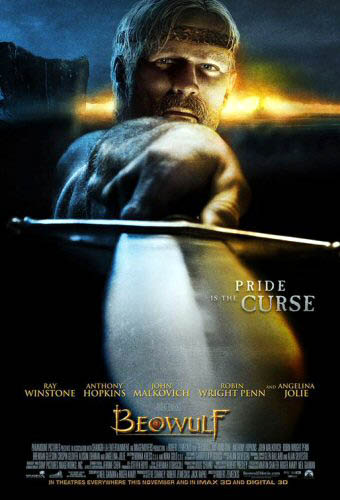
KT: I do not understand Beowulf. I don’t understand why the director who made one of the great modern Hollywood films, Back to the Future, and several very good ones, including Who Framed Roger Rabbit? and Cast Away, now has this fixation with creating nearly photo-realistic 3D digital images.
DB: I think that on the whole Zemeckis’ films have become weaker since Bob Gale stopped working with him. I like the sentiment of I Wanna Hold Your Hand and the crass misanthropy of Used Cars, and I think the Back to the Future trilogy mixes both in clever ways. But now almost every Zemeckis film seems to be less about telling a story than solving a technical problem. How to best merge cartoons and humans (Roger Rabbit)? How to push the edge of spfx (Death Becomes Her, Forrest Gump, Contact)? How to make half a movie showing only one character (Cast Away)? There’s a stunting aspect to this line of work, though I grant that it can lead to technical breakthroughs, as in Gump.
KT: I also don’t understand why most of the supposedly state-of-the-art effects technology looks distinctly cruder than the CGI in The Lord of the Rings, the first part of which came out six years ago. I don’t understand why studios that are trying to push 3D to a broad audience make a film with silly action aimed at teenage boys. That’s an OK strategy when you’ve got a $30 million horror film, but a budget of $150 million demands a lot broader appeal.
DB: And the evidence so far indicates Beowulf doesn’t have that appeal. The obvious comparison is 300, from earlier this year. According to Box Office Mojo it cost about $65 million to make, but it reaped $70 million domestically in its first weekend and wound up with $450 million theatrically worldwide. Beowulf grossed $27.5 million in its first US weekend and currently sits at about $146 million worldwide. I’d think that this has to be a disappointment. Recall too that the Imax screenings have higher ticket prices, so there are fewer eyeballs taking in Angelina Jolie’s pumps, braid, and upper respiratory area.
In addition, sources suggest that a 3-D version of Beowulf will not be available on DVD, so the sell-through takings—the real source of studio profit—may be significantly smaller than average.
KT: It seems to me that the people who are pushing 3-D so hard and hoping for it to become standard in filmmaking are forcing it on the public too soon. It’s still fiendishly difficult and expensive to shoot live action material in digital 3-D, so most projects are animated. One approach, taken in Beowulf, is to motion-capture real people and animate the characters to make them appear as much like the real people as possible. The problem is that they still have a weird look about them, like moving dolls. People have complained about the dead-eyed gaze of the characters in The Polar Express, and though there’s apparently been an improvement between the two films, the eyes don’t always look as though they’re focusing on anything. It can be done, though; the extended-edition Lord of the Rings DVD supplements about Gollum show how much effort went into making his eyes have a realistic sheen and flicker.
I was also struck by how clunky some of the animation looked. Beowulf is supposedly state of the art, and it certainly had the budget of a major CGI film. Yet some of the rendering and motion-capture was distractingly crude. I noticed that particularly on the horses. Their coats looked pre-Monsters, Inc., and their movements at times reminded me of kids rocking plastic toys back and forth. I suspect this effect had something to do with a lack of believable musculature. If you look at the way the cave troll was done in The Lord of the Rings: The Fellowship of the Ring (again, demonstrated in the DVD supplements), there was a specific program to simulate the way muscles move on skeletons, even the skeletons of imaginary creatures. Now, six years later, we see these things that look like hobby-horses—and that all run alike.
The backgrounds were often strange as well, simple and flat-looking, like painted backdrops. There were some exceptions, with the seascapes and rocky crags pretty realistically done. But just plain hillsides and groups of tents and so on looked almost sketchy in comparison with the moving figures, and I noticed that at times some fog would be put in, presumably to cover that problem up. There certainly was some very good animation as well, most notably the dragon, but there was no consistency of visual style.
DB: I’d go farther and say that 3-D hasn’t improved significantly since the 1950s. It ought to work: just replicate the eyes’ binocular disparity by setting two cameras at the proper interval or, now, by manipulating perspective with software. Yet in films 3-D has always looked weirdly wrong. It creates a cardboardy effect, capturing surfaces but not volumes. Real objects in depth have bulk, but in these movies, objects are just thin planes, slices of space set at different distances from us. If our ancestors had seen the world the way it looks in these movies, they probably wouldn’t have left many descendants.
It would take a perceptual psychologist to explain why 3-D looks fake. Whatever the cause, I’d speculate that good old 2-D cinema is better at suggesting volumes exactly because the cues to depth are less specific and so we can fill in the somewhat ambiguous array.
By the way, in watching a 3-D movie I seem to go through stages. First, there’s some adjustment to this very weird stimulus: I can’t easily focus on the whole image and movement seems excessively fuzzy. Then adaptation settles in and I can see the 2 ¼-D image pretty well. But adaptation carries me further and by the end of the movie I seem to see the image as less dimensional and more simply 2-D; the effects aren’t as striking. But maybe this is just me.
Back to the Future, or at least 1954
DB: I’d like to think about it from a historical perspective for a while. The industry seems to be repeating a cycle of efforts that took place in 1952-1954. The American box office plunged after 1947 as people strayed to other entertainments, including TV, and so the industry tried to woo them back with some new technology. Today, as viewers migrate to videogames, the Internet, and movies on portable devices, how can theatres woo their customers? Answer: Offer spectacle they can’t get at home.
Beowulf brings together at least three factors that eerily remind me of the early 1950s.
(1) Obviously, 3-D. The first successful 3-D feature era was Bwana Devil, released in November of 1952. It was an uninspired B movie, but it launched the brief 3-D craze. Columbia, Warners, and other studios made major pictures in the format, most notably House of Wax (1953). But costs of shooting and screening 3-D were high, with many technical glitches, and apart from novelty value, the process didn’t guarantee a big audience. The fad ended in spring of 1954, when all studios stopped making films in the format.
The process has been sporadically revived, notably in the 1980s (Comin’ at Ya, Jaws 3-D) and once more it fizzled. So, ignoring the lessons of history and chanting the mantra that Digital Changes Everything, we try it again.
(2) Big, big screens. In September of 1952, Cinerama burst on the scene with its huge tripartite screen and multitrack sound. It attracted plenty of viewers, but it could be used only in purpose-built venues. Like 3-D, its technology could never replace ordinary 35mm as the industry standard. The contemporary parallel is Imax, which though very impressive will not replace orthodox multiplex screens—too expensive to install and maintain, pricy tickets. Like 3-D, it’s a novelty. (1)
(3) The sword-and-sandal costume epic. It’s a long-running genre, but it got significantly revived in the late 1940s. It was a logical input for the new technologies of widescreen—not Cinerama but more practical offshoots that gained more general usage.
From the standard-format Samson and Delilah (1949), David and Bathsheba (1951), and Quo Vadis (1951) it was a short step to The Robe (1953) and The Egyptian (1954) in CinemaScope, The Ten Commandments (1956) in VistaVision, The Vikings (1958) in Technirama, Hercules (1959) in Dyaliscope, Solomon and Sheba (1959) and Spartacus (1960) in Super Technirama 70, and Ben-Hur (1959) in anamorphic 70mm Panavision. It is, incidentally, a pretty dire genre; the peplum might be the only genre that has given us no great films since Cabiria (1914) and Intolerance (1916).
In parallel fashion, the revival of the beefcake warrior film with Gladiator (2000) coincided with innovations in CGI and thus furnished new forms of spectacle for Troy (2004), Kingdom of Heaven (2005), and 300 (2007). This trend paved the way for Beowulf. When screens get bigger, Hollywood hankers for crowds, oiled biceps, big swords, and nubile ladies in filmy clothes. Not to mention soundtracks with pounding drums, wailing sopranos, and choirs chanting dead or made-up languages. And the conviction that Greeks, Romans, and those other ancient folks spoke with British accents. The innovation of Beowulf is to turn a Nordic hero into a Cockney pub brawler.
In other words, it’s 1954 again. So if we ask, Will it all last? I’m inclined to answer, Did 1954?
KT: Yes, the studios see the new technology as one more way to lure people away from their computers and game consoles and into the theaters. Maybe that will work to some extent. There’s no doubt that a lot of the people who have seen Beowulf have praised it as a fun experience and as having effectively immersive 3-D effects. I’m surprised at how many positive comments there are on Rotten Tomatoes, where the average score from both amateur and professional reviewers is 6.5 out of 10. That’s not exactly dazzling, but it’s a lot higher than I would give it.
Even so, the film hasn’t lured all that many people away from their other activities. You’ve mentioned that Beowulf hasn’t done all that well at the box-office. It did much better in theaters that showed it in 3-D. If it hadn’t been for the 3-D gimmickry, it would probably have been dead in the water from the start. And if 3-D effects remain on the level of gimmickry, they will soon wear out their welcome. Presumably the people who have been going to Beowulf are to a considerable extent those who are already interested in 3-D, and I can’t believe there are huge numbers of people really passionate about the idea of someday being able to watch lots of films in 3-D. If more films like Beowulf come out—ludicrous, bombastic action with distracting animation problems—they’re not likely to make the prospect any more attractive.
Eventually somebody—James Cameron or Peter Jackson, perhaps—will make the first great 3D film, and then maybe the passion will spread.
3-D in 2-D
DB: I’m doubtful that there will ever be a great 3-D film, and especially from those directors. But one last historical note.
I think that ordinary mainstream cinema has been setting us up for the flashiest 3-D flourishes for some time. One of the goals of the Speilberg-Lucas spearhead was to amp up physical action, to make it more kinetic, and this often showed up as in-your-face depth. Spielberg used a lot of deep-focus effects to create a punchy, almost comic-book look, and who can forget the opening shot of Star Wars, with that spacecraft arousing gasps by simply going on into depth forever? Seeing the movie in 70mm on release, I was struck by how the last sequence of Luke’s attack mission was maniacally concerned with driving our eye along the fast track of central perspective. Did it foreshadow the tunnel vision of videogame action?
In any case, I think that aggressive thrusting in and out of the frame was integral to the style of the new blockbuster. Since then, our eyes have been assaulted by plenty of would-be 3-D effects in 2-D. In Rennie Harlan’s Driven (2001), the crashing race cars spray us with fragments.
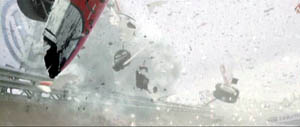
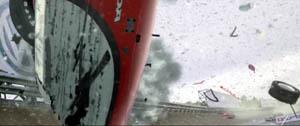
Jackson is definitely in the Spielberg line, favoring steep depth and big foreground elements. In King Kong, the primeval creatures lunge out at us, heave violently across the frame, and fling their victims into our laps.
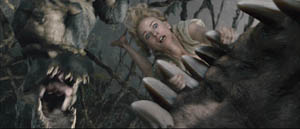
Such shock-and-awe shots recall American comic-book graphics. These affinities are at the center of 300, as we’d expect. For example, a cracking whip curls out at us in slow motion, like a two-panel series.
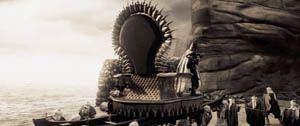
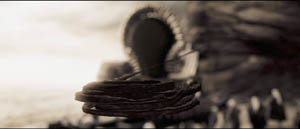
Beowulf draws on this thrusting imagery, but inevitably it doesn’t seem fresh because so many 2-D films have already used it. Maybe the most original device is having the camera pull swiftly back and back and back, letting new layers of foreground pop in and shrink away. This is viscerally arousing in 3-D, but aren’t there precedents for it—in the Rings, in animated films, or some such?
Zemeckis tries to transpose into 3-D the style of what I’ve called, in The Way Hollywood Tells It, intensified continuity. This style favors rapid cutting, many close views, extreme lens lengths, and lots of camera movement. I found Zemeckis’ restless camerawork even more distracting than in 2-D. So I’m wondering if current stylistic conventions can simply be transposed to 3-D, or do directors have to be more imaginative and make fresher choices?
KT: That pull-back effect may be viscerally arousing, but in Beowulf it was usually pretty gratuitous and, for me at least, it called attention to itself in a way that was often risible. I don’t think there’s anything in Rings as crude as the shots in Beowulf that you’re talking about. In the opening scene of the latter, in the mead-hall, the camera zips into the upper part of the room, with rafters, chains, torches, and even rats whizzing in from the sides of the frame. None of that contributes to the narrative.
The flashiest backward camera movement, or simulated camera movement, I can think of in Rings is the one in the Two Towers scene where Saruman exhorts his army of ten thousand Uruk-hai to battle. The final shot is a rapid track backward through the ranks of soldiers holding flag poles. The point is to stress the enormous numbers of soldiers. There’s no gratuitous thrusting-in of set elements from the sides, just the cumulative effect of so many similar figures. The simulated camera also at one point “bumps” one of the flagpoles, causing it to wobble, but I take it that that’s an attempt to add a certain odd realism to the “camera” movement, not a knowing nudge to the audience. In Rings, the virtual camera usually follows action rather than moving independently through space. It tends to go forward or obliquely rather than backward.
As to transferring classical Hollywood style to 3-D or finding a whole new set of conventions to fit 3-D, Beowulf offers an object lesson. It uses a combination of the two. At times we have conventional conversations using shot/reverse shot, and at other times we have the swoopy-glidey style you described, with the camera zipping around the space and trying to see it from every angle within a few seconds.
The odd thing is, neither one works. The very close shot/reverse shot views of the digital characters make them look unnatural and emphasizes the not infrequent failure of their eyes to connect with each other. The swoop-glidey camera movements are silly and don’t stick to the narrative.
I’m not optimistic enough to think that directors can come up with a whole set of “fresher stylistic choices” to make 3-D work. Maybe Sergei Eisenstein, with his meticulous attention to every aspect of such topics, could have thought the issue through, but his solution would probably not be viable for the Hollywood studios. My own thought is that directors working in 3-D should probably stick to classical Hollywood style and avoid flashy stylistic effects. So far, the more blatantly 3-D something looks on the screen, the less it makes 3-D seem like something we want to watch on a regular basis. Think of the best films of this year: Zodiac, The Assassination of Jesse James by the Coward Robert Ford, Ratatouille, Across the Universe, and so on. Would any of them be better in 3-D? Probably not.
Plus, I don’t like watching movies through something. Movies should just be the screen and you. The 3-D glasses are definitely better now than in the earliest days of the cardboard, red/green versions. Still, the Imax glasses we used in watching Beowulf were heavy enough to leave a groove on my nose. Make the mistake of touching the lenses, and you’ve got a blur on one half of your vision of the film. In short, I think that 3-D still has to prove itself, and Beowulf didn’t add any evidence.
(1) PS 9 December: DB: I originally added in regard to Imax: “It’s actually waning in popularity, except in newly emerging markets like China.” This disparaging comment was misleading. Yesterday I learned from Screen International that Imax recently signed a deal with AMC to install 100 systems in 33 US cities. Oops! Today Paul Alvarado Dykstra of Austin’s Villa Muse Studios kindly wrote to point out the Hollywood Reporter‘s coverage, which gives background on the costs of installing and maintaining an Imax facility.
I was, obscurely, thinking of the traditional Imax programming of travelogues and documentaries. I failed to register that these have been largely displaced by screenings of blockbuster features, catching fire in 2003 with The Matrix Reloaded and proving successful with The Polar Express and other titles. Imax is now largely an alternative venue for megapictures, and its seesawing financial performance may have been steadied by moving into the features market.
PS 26 December: Travel has delayed our timely linking, but we couldn’t neglect Mike Barrier’s in-depth critique of Beowulf here.
PPS 5 January 2008: Harvey Deneroff has a comprehensive and judicious discussion of the 3D situation here.
